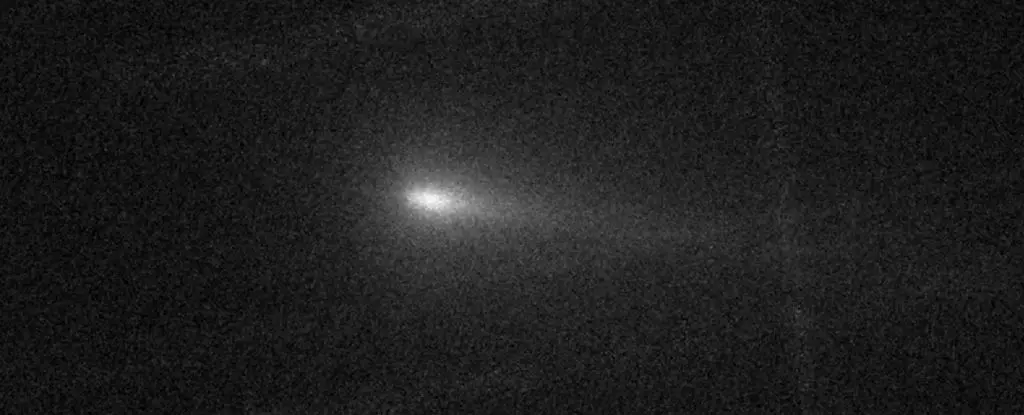The cosmos is an arena where celestial wonders and elusive enigmas coexist. One such enigma, a comet named C/2024 S1, was expected to grace our night skies around Halloween with a brilliance sufficing for naked-eye observation. Sadly, this spectacle is on the verge of becoming a cosmic disappointment as it appears to be breaking apart mere weeks before its predicted closest approach to the Sun. As researchers closely examine this rare Kreutz sungrazer comet, the unfolding drama sparks intrigue while highlighting the unpredictable nature of these icy visitors from the outskirts of our solar system.
Discovered on September 27, 2023, C/2024 S1 was initially hailed for its promise. The comet, which follows a trajectory putting it perilously close to the Sun—merely 1.2 million kilometers (approximately 750,000 miles) away on October 28, 2024—led to excitement among astronomers and amateur stargazers alike. As the comet approached the inner solar system, the anticipation soared, leading many to envision a magnificent display on Halloween night.
However, observing comets is not just about basking in their dazzling light. The behaviors of these celestial bodies are governed by a complex interplay of physical and chemical forces. In the case of C/2024 S1, signs of instability began to emerge shortly after its discovery. Over the course of October, observers noted that instead of steadily brightening towards its anticipated peak, the comet exhibited erratic behavior—initial outbursts of light followed by diminishing visibility that has led to speculation regarding its integrity.
Amateur and professional astronomers reported that the comet’s nucleus seemed to fade significantly, leading many to suspect it could be experiencing disintegration. Such fragmentation is not unique; it is a phenomenon observed in similar comets when they venture close to the Sun. As sunlight heats the icy cores of these celestial bodies, sublimation occurs—ice transitions directly into gas—with volatile compounds releasing dust and gas. This rapid outgassing may accelerate the spin of the comet, contributing to structural weaknesses and eventual breakup.
This situation is reminiscent of the tragic fate of Comet C/2019 Y4, which met its demise as it approached the Sun in 2020, leaving a foothold in the annals of cosmic observation. Given the past behavior of comets, astronomers are concerned about the fate of C/2024 S1, as it could very well be following in those footsteps. The disintegration of comets, while disappointing, is also somewhat expected; observations show that their icy constituents often render them fragile when encountering the intense heat of the Sun.
Why Do Comets Disintegrate? An Exploration
The reasons for the disintegration of comets are under constant scientific scrutiny. One coherent theory points towards the volatile makeup of comets themselves. The frigid environments from which they originate leave them laden with ice, and as they approach the Sun, processes such as sublimation can become ferocious. The gasses released may create forces strong enough to fracture their nuclei.
Therefore, while C/2024 S1 had potential for grandeur, the signs suggest it is succumbing to the very forces that initially beckoned it towards us. Observations from October 20 and 22 have revealed that the comet’s nucleus may be fading from the visible spectrum, impairing its chances of being the spectacle that observers originally anticipated.
Despite the trajectory toward disintegration, there remains a glimmer of hope. A large fragment of the nucleus may endure the process, allowing it to continue its journey towards the Sun and possibly retain some visibility. Even if the nucleus ultimately disintegrates, astronomers anticipate that the tail of gas and dust could persist for some time, offering an alternate view for skywatchers, albeit without the luminescent ‘head’ that makes comets so captivating.
Interestingly, C/2024 S1 is believed to be part of a lineage of comets stemming from the historic Great Comet of 1106 CE. This historical association points towards a kinship within our solar system, providing a larger narrative connecting us to our celestial neighbors in ways that remain astounding.
C/2024 S1’s anticipated journey toward the Sun represents an ongoing saga of cosmic unpredictability and majesty. As the comet potentially faces its final moments bubbling with existential tensions, astronomers will be eagerly watching. The lesson here is one of humility—our understanding of these frozen travelers is constantly evolving, dictated by forces beyond our control. Happy hunting, indeed; for every disappointment, there remains the possibility of wonder just beyond the visible horizon.

